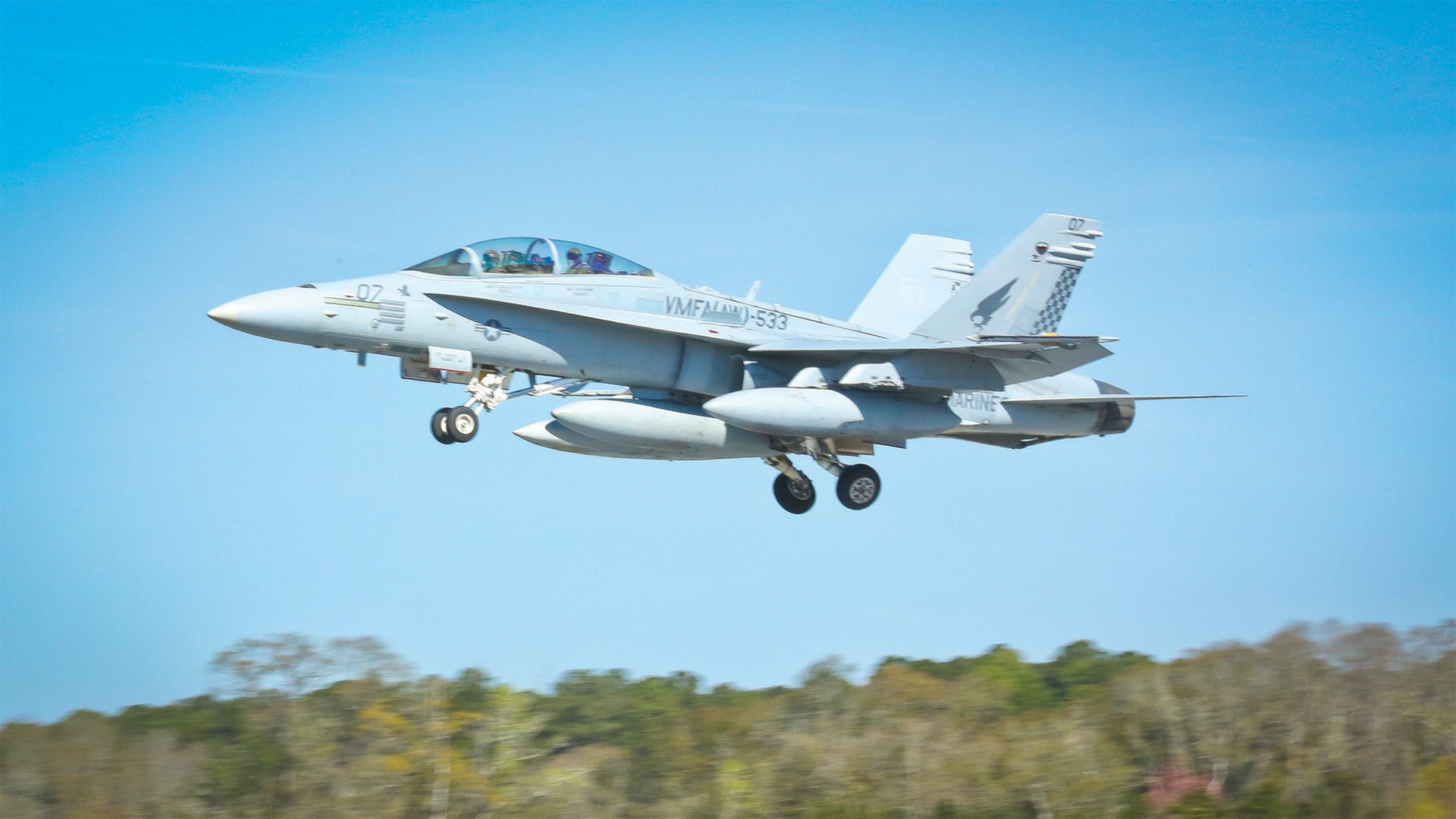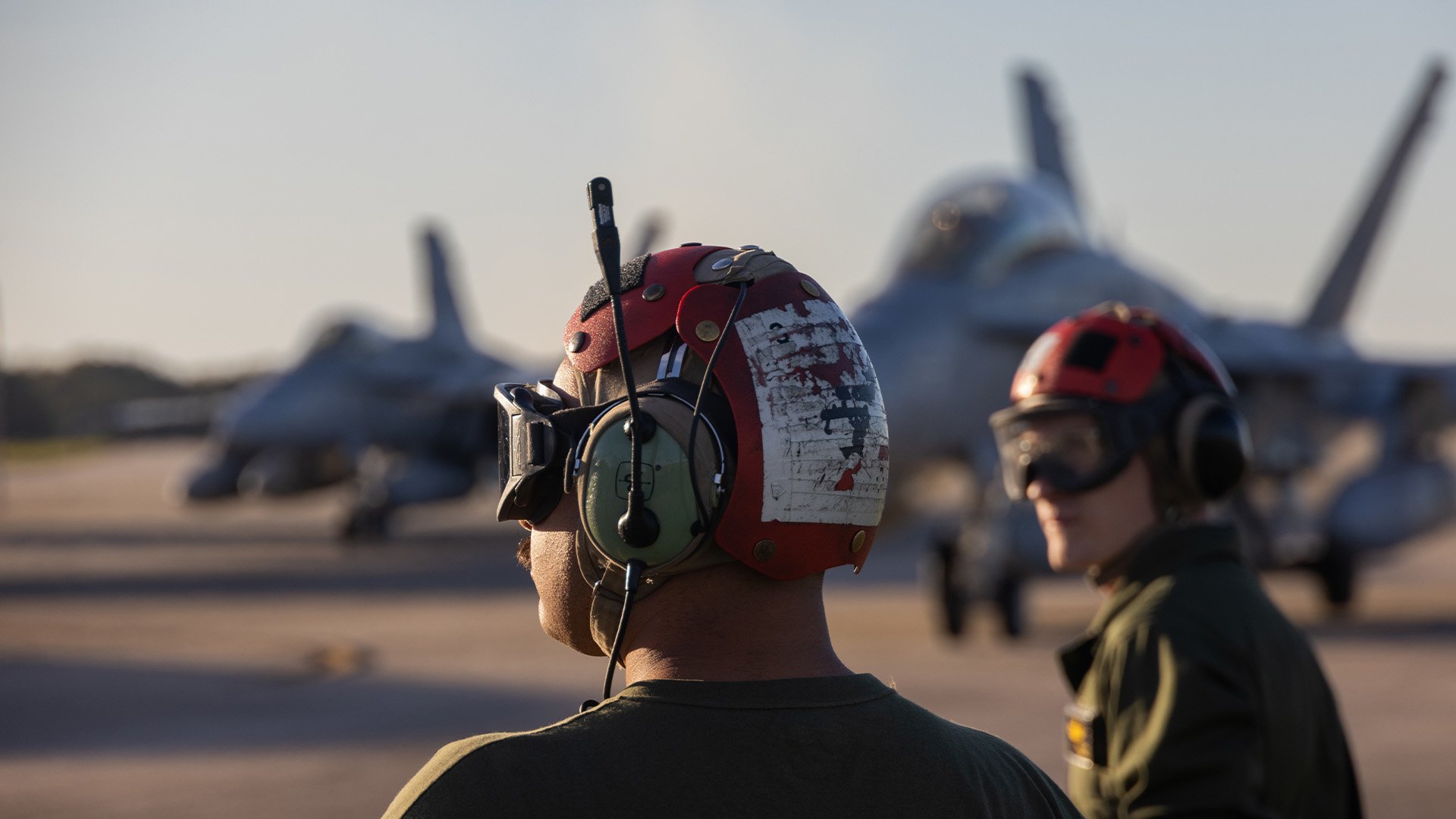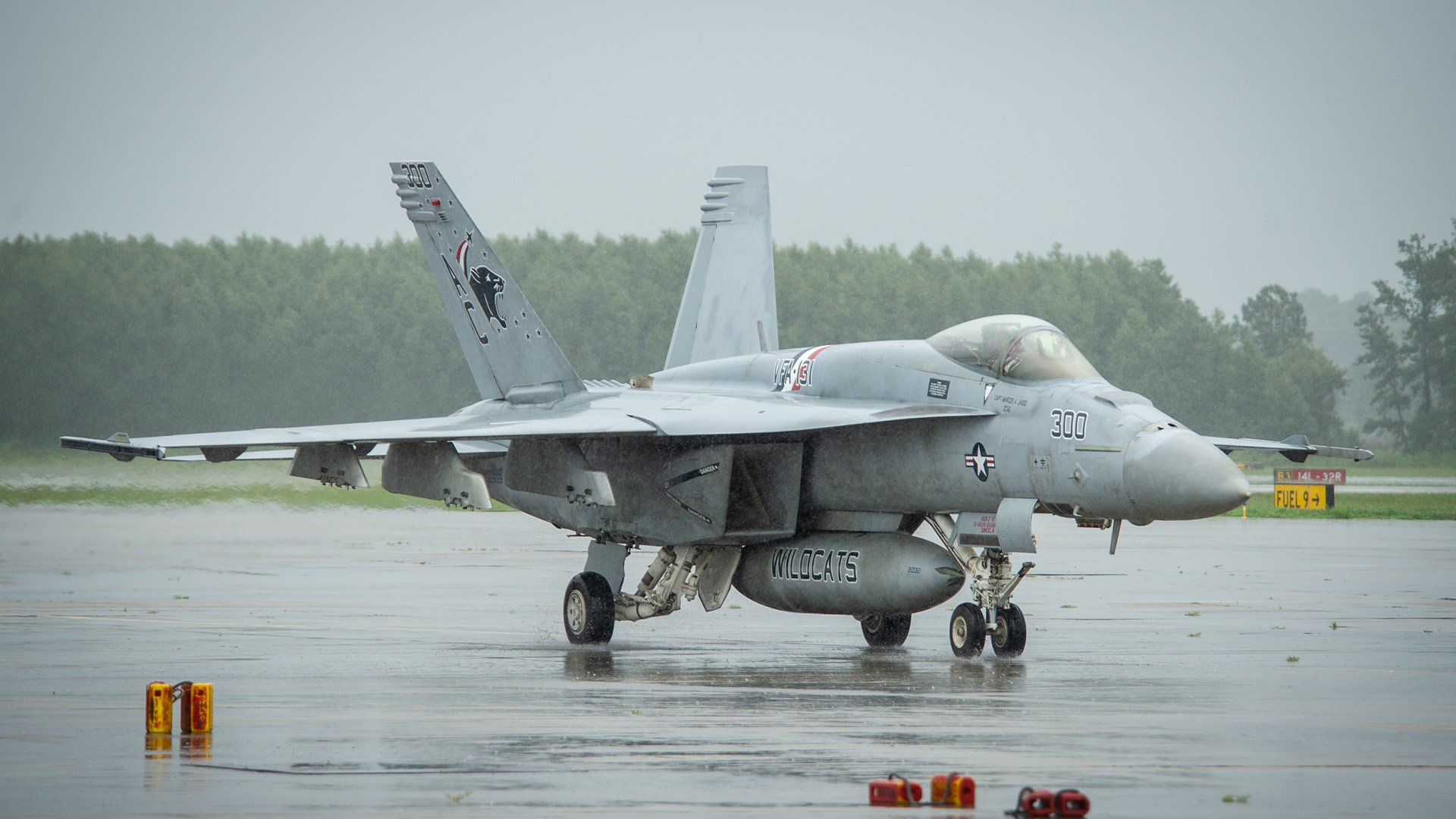
An F/A-18D Hornet strike fighter from the "Hawks" of Marine All-Weather Fighter Attack Squadron 533 departs South Carolina's Marine Corps Air Station Beaufort on March 9, 2018, bound for Marine Corps Air Station Iwakuni in Japan. A similar jet from the squadron crashed on March 3, 2022, near Lobeco, South Carolina. US Marine Corps photo by Lance Cpl. Terry Haynes.
A string of air accidents tied to US Navy and Marine Corps squadrons in Virginia and South Carolina remains shrouded in mystery, with officials offering few details about the very expensive mishaps.
On March 3, a Marine two-seat F/A-18D Hornet crashed shortly after takeoff, with both crew members ejecting safely near Lobeco, South Carolina, according to a brief description of the accident posted by Naval Safety Command.
The safety center marked it as a nonfatal Class A mishap, which means the aircraft sustained at least $2.5 million in damage.
The Coosaw River divides Marine Corps Air Station Beaufort from Lobeco.
And although local media reported that a Hornet assigned to the “Hawks” of Marine All-Weather Fighter Attack Squadron 533 went down around 3:15 p.m. that day near Halfmoon Island on ex-Gov. Mark Sanford’s Coosaw Plantation, it remains unclear what happened to the military’s promised probe into what caused the crash.

A pair of "Hawks" from Marine All Weather Fighter Attack Squadron 533, watch F/A-18 Hornets return from a deployment at Marine Corps Air Station Beaufort, South Carolina, on Oct. 18, 2022. US Marine Corps photo by Lance Cpl. Kyle Baskin.
When Coffee or Die Magazine filed a request under the federal Freedom of Information Act for the investigation that was supposed to have kicked off immediately after the mishap, officials at the North Carolina-based 2nd Marine Aircraft Wing said they couldn’t find it.
They directed the news outlet to Naval Safety Command, where a draft of the investigation might’ve ended up. On Wednesday, Naval Safety Command spokesperson Stephanie Slater pledged to solve the mystery of the missing report.
Then on Thursday, Dec. 15, 2nd Marine Aircraft Wing told Coffee or Die that the investigation hasn't ended. It awaits a final endorsement.
"The Marine Corps thoroughly investigates all mishaps to identify the causes, learn from them, and take action to reduce the chances of future mishaps," said 2nd Marine Aircraft Wing spokesperson Maj. Melanie Salinas in an email to Coffee or Die.
Although the Navy announced the retirement of its aging fleet of Hornets nearly four years ago, the Marines vowed to keep flying them.

An F/A-18E Super Hornet from the "Wildcats" of Strike Fighter Squadron 131 returns to Naval Air Station Oceana in Virginia Beach, Virginia, after a regularly scheduled deployment, Aug. 6, 2020. US Navy photo by Mass Communication Specialist 2nd Class Mark Thomas Mahmod.
Navy officials in Virginia offered slightly more details about a pair of Class A mishaps at Naval Air Station Oceana on back-to-back days in late November that combined to cause at least $5 million in damage to the planes.
On Nov. 22, the engine of an F/A-18E Super Hornet jet assigned to the “Wildcats” of Strike Fighter Squadron 131 erupted in flames while flying over the Virginia Capes.
The unidentified pilot landed safely at Oceana and wasn’t injured, according to Cmdr. Robert Myers, the spokesperson for Naval Air Force Atlantic.
On Nov. 21, an F/A-18F Super Hornet's tire blew during takeoff at Oceana, damaging both the jet’s fuselage and engine. The pilot, who’s assigned to the “Gladiators” of Strike Fighter Squadron 106, a fleet replacement unit, landed safely, Myers said.
Navy investigators are probing both accidents, Myers added.
Editor's Note: This story was updated on Dec. 15, 2022, to include a second written statement from 2nd Marine Aircraft Wing.
Read Next: Not Just an $858 Billion Bill on Capitol Hill: More Sailors, Pay Hike

Carl Prine is a former senior editor at Coffee or Die Magazine. He has worked at Navy Times, The San Diego Union-Tribune, and Pittsburgh Tribune-Review. He served in the Marine Corps and the Pennsylvania Army National Guard. His awards include the Joseph Galloway Award for Distinguished Reporting on the military, a first prize from Investigative Reporters & Editors, and the Combat Infantryman Badge.
BRCC and Bad Moon Print Press team up for an exclusive, limited-edition T-shirt design!
BRCC partners with Team Room Design for an exclusive T-shirt release!
Thirty Seconds Out has partnered with BRCC for an exclusive shirt design invoking the God of Winter.
Lucas O'Hara of Grizzly Forge has teamed up with BRCC for a badass, exclusive Shirt Club T-shirt design featuring his most popular knife and tiomahawk.
Coffee or Die sits down with one of the graphic designers behind Black Rifle Coffee's signature look and vibe.
Biden will award the Medal of Honor to a Vietnam War Army helicopter pilot who risked his life to save a reconnaissance team from almost certain death.
Ever wonder how much Jack Mandaville would f*ck sh*t up if he went back in time? The American Revolution didn't even see him coming.
A nearly 200-year-old West Point time capsule that at first appeared to yield little more than dust contains hidden treasure, the US Military Academy said.












